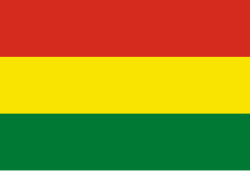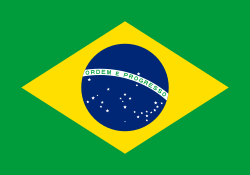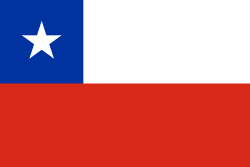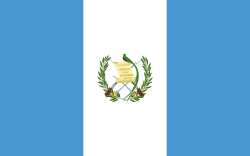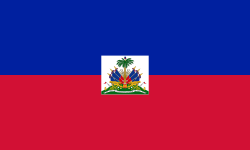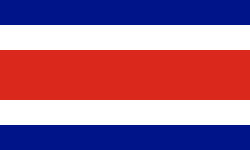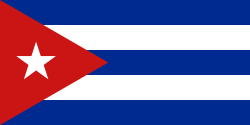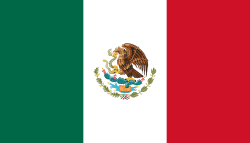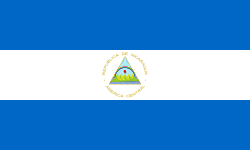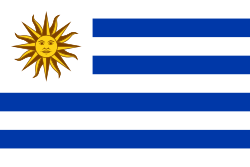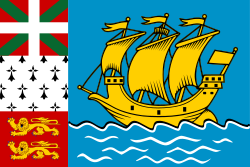Latinská Amerika

Jako Latinská Amerika jsou označovány země amerického kontinentu jižně od USA, ve kterých se mluví jedním z románských jazyků: španělsky, portugalsky nebo francouzsky.
Do prostoru Latinské Ameriky spadají geograficky také Belize, Falklandy, Guyana, Surinam, Trinidad a Tobago a řada ostrovních států a závislých území v Karibiku, jazykově ale do tohoto prostoru nespadají.
Název odkazuje na románský původ jazyků přinesených do této oblasti kolonizátory a na s nimi svázané kulturní dědictví. Z celku Jižní a Střední Ameriky vyčleňuje Belize, (Britskou) Guyanu a Surinam a je diskriminativní vůči indiánským kulturám.
Poprvé bylo označení „Latinská Amerika“ navrženo v průběhu obsazení Mexika Francouzi (1862–1867), kdy Napoleon III. podporoval snahu arcivévody Maxmiliána stát se mexickým císařem.
Pojem Latinská Amerika bývá často mylně chápán jako synonymum pojmu Iberoamerika. Toto označení se však nevztahuje na země s francouzským kulturním dědictvím. Ani ono není politicky zcela korektní, neboť poukazuje na původ portugalských a španělských kolonizátorů – Pyrenejský poloostrov (Península Ibérica) – a indiánské kulturní dědictví pomíjí. Dalšími geografickými výrazy používanými pro tento region jsou pojmy Hispanoamerika, který je souhrnným označením pro španělsky mluvící země a Lusoamerika označující portugalsky mluvící Brazílii.
Přehled
Nezávislé státy
Závislá území
 Portoriko
Portoriko Francouzská Guyana
Francouzská Guyana Guadeloupe
Guadeloupe Martinik
Martinik Svatý Bartoloměj
Svatý Bartoloměj Svatý Martin
Svatý Martin  Saint Pierre a Miquelon
Saint Pierre a Miquelon
Odkazy
Poznámky
- ↑ status oficiálního jazyka má v Bolívii kromě španělštiny 36 indiánských jazyků
- ↑ Haiti má 2 oficiální jazyky: francouzštinu a haitskou kreolštinu
- ↑ Mexiko nemá ve své ústavě stanoven žádný oficiální jazyk, španělština jím ale de facto je
- ↑ status oficiálního jazyka má v Panamě kromě španělštiny i 5 domorodých jazyků
- ↑ španělština je oficiálním jazykem Paraguaye spolu s guaraní
- ↑ Peru má 3 of. jazyky: španělština, kečuánština a ajmarština
Reference
- ↑ (anglicky) hodnoty populace států přebrány ze stránek CIA Archivováno 27. 9. 2011 na Wayback Machine.
- ↑ (anglicky) hodnoty rozlohy států přebrány ze stránek CIA Archivováno 9. 2. 2014 na Wayback Machine.
- ↑ (anglicky) údaje pro rok 2023 dle Mezinárodního měnového fondu
Literatura
- KLÍMA, Jan. Zrození Latinské Ameriky. Simón Bolívar a jeho doba. Libri, Praha 2007.
- SLAVICKÝ, Stanislav. Scénické tradice Latinské Ameriky. Praha : KANT – Karel Kerlický, 2013. 136 s. ISBN 978-80-7437-117-2.
Související články
Externí odkazy
 Slovníkové heslo Latinská Amerika ve Wikislovníku
Slovníkové heslo Latinská Amerika ve Wikislovníku Obrázky, zvuky či videa k tématu Latinská Amerika na Wikimedia Commons
Obrázky, zvuky či videa k tématu Latinská Amerika na Wikimedia Commons - Latinská Amerika Dnes[nedostupný zdroj] – zprávy, informace a zajímavosti z Latinské Ameriky
Média použitá na této stránce
| Flag of Bolivia* | |
|---|---|
| country | Template:I18n/Republic of Bolivia |
| used by | Bolivia |
| from | 1851 |
| until | Present |
| created by | Government of Bolivia |
| format | 15:22 |
| shape | rectangular |
| colours | červená, žlutá, zelená
flag has 3 horizontal stripes |
| other characteristics | A horizontal tricolor of red, yellow and green. |
Při zobrazení tohoto souboru lze snadno přidat orámování
The flag of the Dominican Republic has a centered white cross that extends to the edges. This emblem is similar to the flag design and shows a bible, a cross of gold and 6 Dominican flags. There are branches of olive and palm around the shield and above on the ribbon is the motto "Dios,Patria!, Libertad" ("God, Country, Freedom") and to amiable freedom. The blue is said to stand for liberty, red for the fire and blood of the independence struggle and the white cross symbolized that God has not forgotten his people. "Republica Dominicana". The Dominican flag was designed by Juan Pablo Duarte, father of the national Independence of Dominican Republic. The first dominican flag was sewn by a young lady named Concepción Bona, who lived across the street of El Baluarte, monument where the patriots gathered to fight for the independence, the night of February 27th, 1844. Concepción Bona was helped by her first cousin María de Jesús Pina.
The flag of the Dominican Republic has a centered white cross that extends to the edges. This emblem is similar to the flag design and shows a bible, a cross of gold and 6 Dominican flags. There are branches of olive and palm around the shield and above on the ribbon is the motto "Dios,Patria!, Libertad" ("God, Country, Freedom") and to amiable freedom. The blue is said to stand for liberty, red for the fire and blood of the independence struggle and the white cross symbolized that God has not forgotten his people. "Republica Dominicana". The Dominican flag was designed by Juan Pablo Duarte, father of the national Independence of Dominican Republic. The first dominican flag was sewn by a young lady named Concepción Bona, who lived across the street of El Baluarte, monument where the patriots gathered to fight for the independence, the night of February 27th, 1844. Concepción Bona was helped by her first cousin María de Jesús Pina.
The national and official state flag of Haiti; arms obtained from File:Coat of arms of Haiti.svg. The civil flag can be found at here.
Note: The color selected is «turquoise blue» (the color mentioned in the decree), as defined by Pantone.

